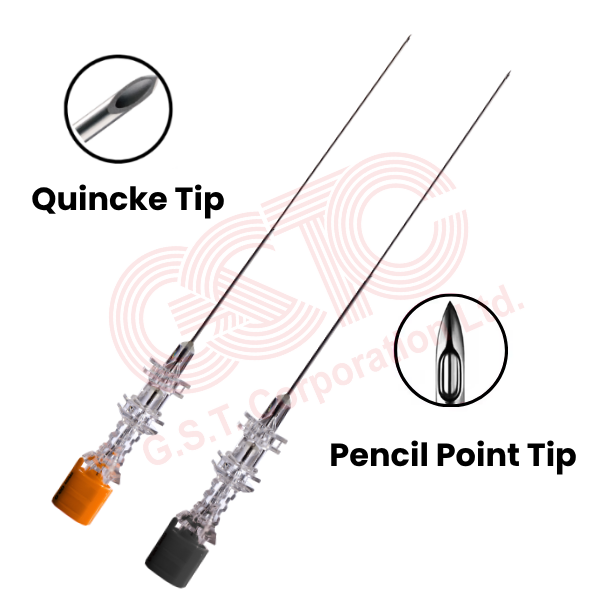A spinal needle is a thin, hollow, and long medical instrument that doctors use to access the spinal canal for different purposes. They mainly use it to inject anesthetic medication during spinal anesthesia or to collect cerebrospinal fluid (CSF) for diagnostic tests like a lumbar puncture.
Manufacturers design it with precision so that it can safely pass through different tissue layers and reach the subarachnoid space without causing unnecessary trauma.

Why is the Spinal Needle Important?
The spinal needle is not just another surgical tool—it serves as a lifeline for many critical procedures. Imagine a major surgery where doctors cannot put the patient under general anesthesia due to health risks. In such cases, they use spinal anesthesia with a spinal needle as a safe and effective alternative.
Doctors also rely on it to diagnose neurological conditions by collecting cerebrospinal fluid samples. Without a spinal needle, procedures like lumbar punctures would be nearly impossible.
Key Features of a Spinal Needle
Thin and Hollow Shaft – Reaches the spinal canal safely.
Sharp or Pencil-Point Tip – Minimizes tissue injury.
Markings – Help anesthetists measure depth during insertion.
Hub – Provides control and precision.
Stylet – Prevents tissue coring with a solid inner piece.
These features together make the spinal needle safe and effective.
Types of Spinal Needles
Doctors choose different spinal needles for different procedures. The most common types include:
Quincke Needle (Cutting Tip)
Uses a traditional design with a sharp beveled tip.
Allows easy insertion but carries a slightly higher risk of post-dural puncture headache.Whitacre Needle (Pencil Point)
Uses a non-cutting design that spreads fibers instead of cutting them.
Reduces the chance of complications.Sprotte Needle
Works like Whitacre but has a longer opening.
Provides smoother cerebrospinal fluid flow.Atraucan Needle
Uses a special design that reduces tissue trauma.
Common Uses of a Spinal NeedleDoctors commonly use spinal needles for:
Spinal anesthesia in lower abdominal, pelvic, and lower limb surgeries.
Lumbar punctures to diagnose infections, bleeding, or neurological conditions.
Intrathecal injections for pain relief in chronic conditions or cancer patients.
Diagnostic tests that analyze cerebrospinal fluid.
How to Choose the Right Spinal Needle
If you are a buyer, distributor, or healthcare provider, consider these factors:
The procedure type (diagnostic or anesthesia).
Needle size and length (depends on the patient’s body type).
Tip design (cutting vs non-cutting).
Quality certifications (ISO, CE, FDA).
Sterile packaging for maximum safety.




Write a comment ...